SaaS ERP System focuses more on functionality than aesthetics and so thoughtful and creative UX design is all the more important for it.
Enterprise Software as a Service or Enterprise SaaS applications enhance workplace productivity for many organizations and institutions from different industries. Enterprise Resource Planning (ERP) software provides multiple features for multiple users within the organization to streamline workflow and bring efficiency to each task.
That said, SaaS ERP applications can only offer limited functionality if the user experience of the software is complex. Well and consistently designed ERP systems are the most helpful software for any institution’s work efficiency. To achieve that, implementing better UX design for your software is crucial.
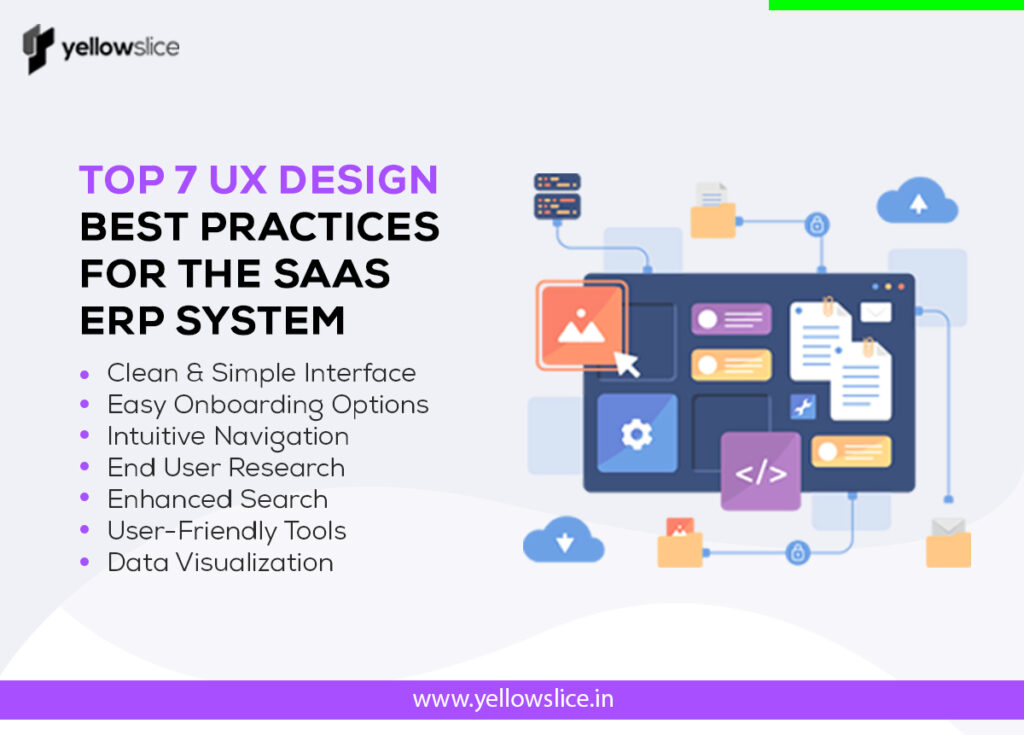
This article will discuss the top 7 UX design best practices for SaaS ERP software that you can employ in your software development to optimize the user experience and gain higher customer satisfaction from your users.
But before we do that, let us check out how a better UX design is helpful to improve your enterprise SaaS platform.
Importance of UX design for SaaS ERP Software
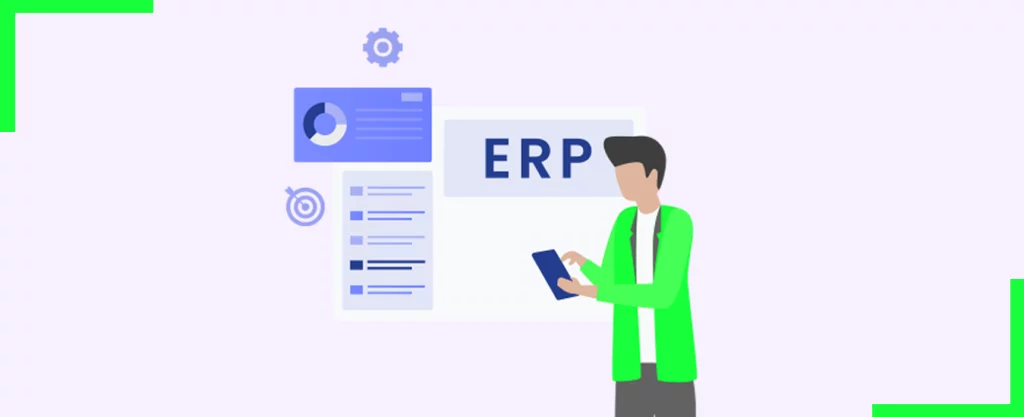
UX design for SaaS applications, especially one like enterprise resource planning software, brings clarity, enhances productivity, and promotes higher collaboration for its users. Better UX design strategies consider users’ needs and requirements and aim to fulfill them while keeping the features and functionality of your software easily accessible for all.
“Making the effort to understand your customer’s expectations can save a lot of friction and extra work.” Steve McConnell.
- Improved productivity: Improving the UX of enterprise SaaS applications allows users to understand the apps better. This leads to users easily completing their desired tasks without any problem, hence, improving their productivity.
- Reduced Confusion: Complex ERP UI/UX design can lead to hard-to-understand software that induces confusion and chaos among its users. With consistent ERP UX design, users can easily comprehend and use the software with reduced confusion over what’s what.
- Higher Client Satisfaction: With better UX design and increased productivity of the institution, the client satisfaction rate of the ERP software product soars.
- Increased Customer Retention: When the client is satisfied with the ERP system, they are bound to keep using it for longer, hence, increasing the customer retention rate.
- Higher profits: Better user experience leading to better work productivity for clients eventually results in higher profits for both the ERP SaaS providers and their clients as more businesses would want to use the software to boost efficiency.
Improving your SaaS UX design offers many such benefits to the service provider as well as its clients. However, before you consider hiring an in-house UX designer to revamp your ERP system’s UX design, consider the following challenges that you may face.
UX Design challenges to design a SaaS ERP Software
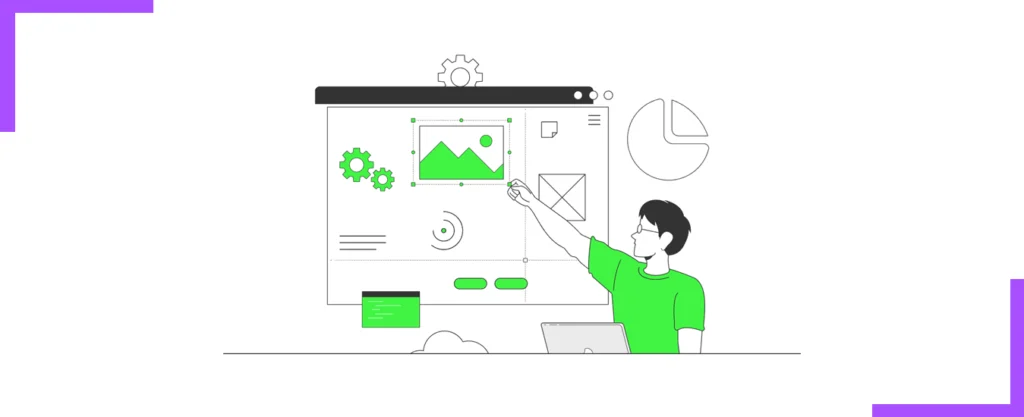
Unlike any other B2C product, enterprise B2B SaaS applications are much more complex. They offer more features and functionality within a single software and are used by multiple users with different requirements. This makes designing the software applications that much more tricky.
In this section, we discuss the different challenges UX designers face while designing a B2B enterprise SaaS application.
Wide Array of Features & Functionalities
As the name suggests an ERP platform is created for enterprises or institutions to manage their day-to-day operations from the same or multiple departments. This means that the software is bound to have a range of features and functionalities to address the requirements of each of its users.
Managing these features and organizing them in a way that makes it easier for the users to find and use them would be a complex task.
Multiple Users & User Roles
Software like Enterprise Resource Planning is used by multiple users within a single institute. They all have different tasks to be completed using the same software. This however does not mean that every single one of the users will need all the features of the ERP platform.
For example, if we take the school management ERP software, the different users would be students, teachers, and parents. However, teachers will have no use of the features made for students and so on.
This means that designers have to think of not one but multiple user journeys, entries and exits, and workflows.
Exhaustive Information
With the number of features, functionality, and users, ERP systems are bound to generate a huge amount of data as well. Comprehending this exhaustive information and organizing it into easily understandable insights can be challenging especially if the information is to be provided role-based.
Helping users find the precise data they are looking for is also a part of the UX design. However, that can be quite challenging for UX designers if they are not familiar with the industry.
Experience Consistency
Another challenge is to bring consistency to the user experience across different devices. While SaaS ERP software is usually accessed using a desktop or laptop, different users may need to access it remotely using a smartphone or tablet.
With the long list of features and modules, bringing responsiveness to the design can be a task for designers. Furthermore, the smallest of errors in the design can make a huge difference, hence, extra care needs to be taken.
Now that you know the challenges of designing an ERP platform, it is time to know the best practices you can employ to enhance your SaaS user experience.
UX Design Best Practices for SaaS ERP Software
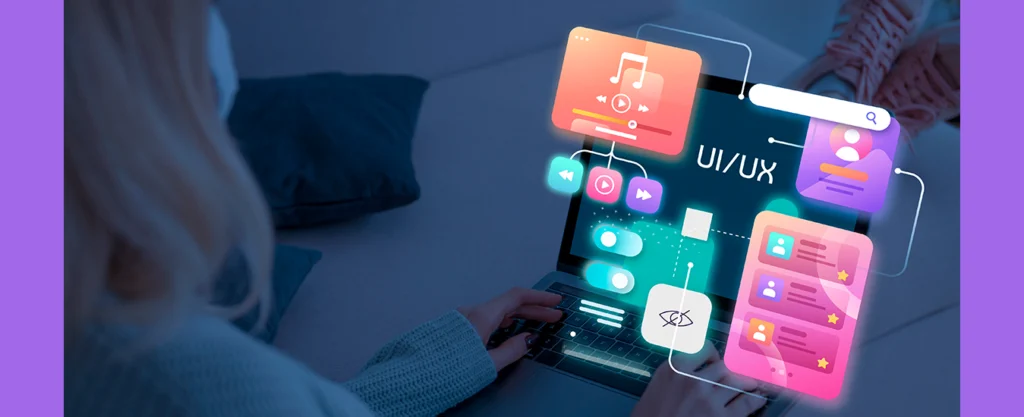
To ensure that your SaaS ERP is up to the mark for your clients and end users. We bring you 7 top UX design best practices that will improve the ERP user experience for all its users.
Starting with…
- Clean & Simple Interface
While the minimal user interface is a growing trend, it is not a feasible solution for designing complex software like ERP systems. The utter number of features and functionalities in a SaaS ERP software needs a justifiable representation. Otherwise, users may have a hard time operating the software for their work.
That said, keeping the interface clean and simple can be achieved with strategic placements of features and components to make them easily discoverable for the users. Choosing sharper UI elements can also help make the interface clean and easily discernible. For example, using cards, contrast colors, and sans-serif fonts can make the interface easy to work with without getting overwhelmed.
- Easy Onboarding Options
SaaS ERP platforms are used by a multitude of user roles with different job functions and varied requirements from the software. However, all the users need to get the job done faster. And they can achieve that if they understand the system faster.
With easier onboarding options, UX designers can ensure that users comprehend the software faster, and get the work done quicker. Elements like coach marks or onboarding videos can help employees and other stakeholders learn the software faster to start using it for completing their desired tasks.
- Intuitive Navigation
Navigation is a crucial aspect of making easy-to-use enterprise SaaS products. It helps users quickly find the feature they are looking for to complete their desired tasks. However, when there are too many modules and features in the software, it can become difficult to find the right one quickly.
To ensure that the menu does not confuse or overwhelm the user, it is important to design the menu in a way that aligns with the user’s intuitive workflow.
One way to clear the menu for users is to employ role-based access control. Many institutions have different users at different seniority levels and job roles. Not every one of them needs all the features. In some cases, some of the confidential information needs to be shared with only the higher-level employees. In such cases, role-based access control can be a helpful tool.
Mapping different users’ journeys, you can personalize the menu with features that the users would need, and no more. This will reduce unnecessary clutter and make it more enjoyable for the users to use the ERP software.
Another option is to offer sub-menus.
- End User Research
As mentioned in the above section, the SaaS-based ERP product caters to multiple users with varied user roles, from the same organization. This means every user will have different requirements from the software. It will also mean that the user journey for each user role will be different.
Hence, comprehensive user research of end-users from different departments is necessary to get an idea of their workflows. While you talk to the company stakeholders, make sure that you also get to talk to people who represent the end users. Moreover, conducting elaborate UX user research with all the involved stakeholders will give you the necessary insights for designing the task flow of the software.
When you know what drives the users to use the software, you will be able to create intuitive strategies to design the ERP software’s user experience.
- Enhanced Search
One of the biggest problems with designing the user experience of a SaaS application is the sheer amount of data it contains. While it is hard for the designers to manage and organize the data, it is also critical that users can find it easily whenever they want it.
For this reason, implementing the search functionality is key. Offering a universal search for the software can significantly reduce the time users may need to spend searching for the feature or information they need.
Moreover, the search can also help users sort through the client data added to the software.
- User-Friendly Tools
No one likes complex processes that feel more complicated than the manual task itself. After all, ERP software is meant to simplify the users’ work process and not overcomplicate them.
Incorporating user-friendly tools will reduce churn and promote faster task completion hence enhancing client productivity as well. Simpler elements like double click to edit or drag & drop can save your users time and increase their work efficiency.
- Data Visualization
We have all seen data represented as text or long tables that seem to go on forever. While it is normal for companies to collect huge amounts of data, representing it in textual or tabular form can be quite overwhelming for the viewers.
To make data easier to understand and analyze, turning it into visuals can be a very useful practice. Visual data is easier to grasp and understand as human brains constantly receive visual information faster than verbal or textual information.
According to a study conducted by Wharton University, data visualization can speed up business meetings by 24%. This means it also speeds up the decision-making process leading to faster, better, and well-informed decisions that bring growth.
These SaaS UX best practices will help you design a better ERP system that can boost your company’s work efficiency and productivity.
Now that we have discussed the UX best practices to design a SaaS ERP application, let’s check out some software that has implemented these practices into designing their user experience.
Examples of Best UX Design for Saas ERP Software

Slack

Slack is an office collaboration suite for corporations that can streamline internal communication. To ensure that its users are easily onboarded, it offers coach marks to help users guide through the software. It also offers a dedicated Slackbot that acts as a customer center chatbot to help users whenever they are stuck.
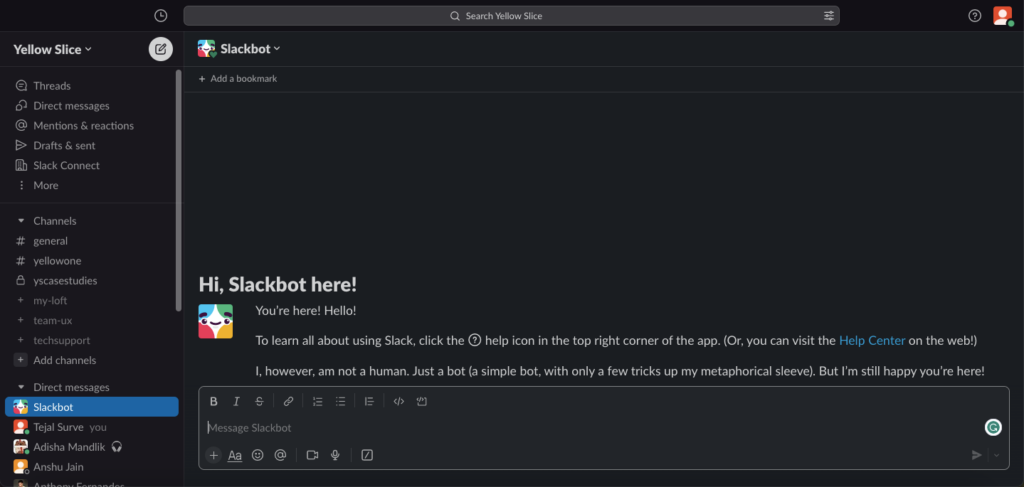
Edunext

Edunext is a School ERP Software that helps educational institutions manage different aspects of their daily operations seamlessly. As schools have multiple stakeholders, Edunext uses Role-Based Access Control to ensure data safety and clarity across the software.
This means features and modules meant for parents may not be visible to teachers or students, or students do not have to view modules like staff attendance and accounts. Leading to an easier understanding of the software and its features for all its users.

QCommission
QCommission is a salesperson finance management software by CellarStone. When it comes to accounting and payments, businesses need quick and accurate insights for meaningful decisions. To achieve that, we designed the QCommission software in a way that represented the data visually for faster understanding and speedier decision-making.
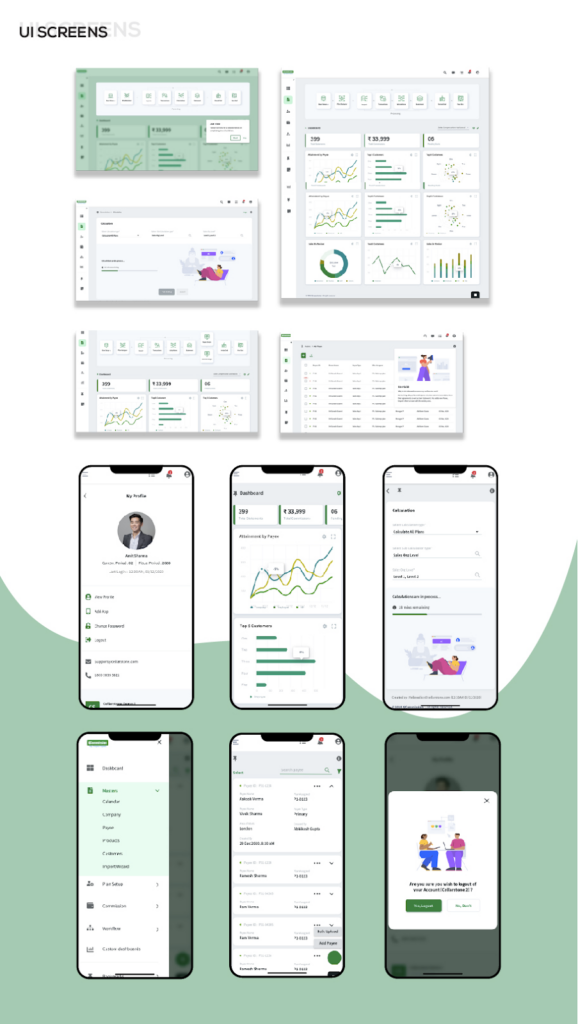
FAQs on UX Design Best Practices for the SaaS ERP System
What does ERP mean in design?
ERP or Enterprise Resource Planning software is a system that allows institutions to complete their complex tasks with the comparative ease that the software offers them. UX design is about strategically designing the ERP software so that users have minimal problems understanding it and maximum productivity after using the software.
What is the 4-step SaaS UX design process?
Any SaaS UX design process follows 4 steps:
- Research: To understand the brand, product, and its users.
- Design: The prototypes, wireframes, and UI screens
- Testing: To see how the users respond to the designs and experience
- Implementation: Execution of the designs within the product to upgrade its experience.
That said, at Yellow Slice, we also add another step to the design process. And that is
- Feedback: Client feedback to understand and further improve the designs.
Are SaaS and ERP the same?
SaaS or software as a service applications are online applications that allow their clients to use their software using the internet connection. Similarly, a SaaS ERP system would be a cloud-based ERP Software that users can use via their computers or mobile devices without downloading any files.
What are onboarding UX best practices?
As mentioned in this article, onboarding UX best practices are UX design practices that reduce the customer churn rate, shortens the learning curve, and help users complete their tasks faster using the application. Some of the popular onboarding UX best practices include:
- Onboarding video
- Knowledge center or user manual
- Coach Marks
Conclusion
SaaS ERP systems help users simplify seemingly complex manual tasks by digitizing them. But with a complementing user experience, the system itself can get too complex to handle by every user.
To ensure that your clients and end-users get to use your ERP software to its full potential, we discussed the top 7 UX design best practices that you can employ in your software.
To summarize, these UX best practices are:
- Clean & Simple Interface
- Easy Onboarding
- Intuitive Navigation
- End User Research
- User-Friendly Tools
- Data Visualization
These practices help decrease the churn rate while boosting workflow efficiency for the users. Ultimately, it will boost client satisfaction leading to higher profits for the software provider. Partnering with a reputable UI UX design agency in India can help you achieve this goal by creating best user-friendly and visually appealing interfaces that enhance the overall user experience.
How Can Yellow Slice Help 🚀
Yellow Slice has more than a decade and a half’s experience in designing SaaS products for our national and international clients. When you bring your product to us, you get the benefit to employ this experience within your project to ensure a product designed to fulfill your user needs.
Wondering whether UX design can uplift your product’s value? Send us a message to know how we can help improve your SaaS product with our UI/UX design solutions.
![Top 7 UX Design Best Practices for the SaaS ERP System [With Examples] UX Design Best Practices for the SaaS ERP System](https://www.yellowslice.in/bed/wp-content/uploads/2023/06/Top-7-UX-Design-Best-Practices-for-the-SaaS-ERP-System.webp)



